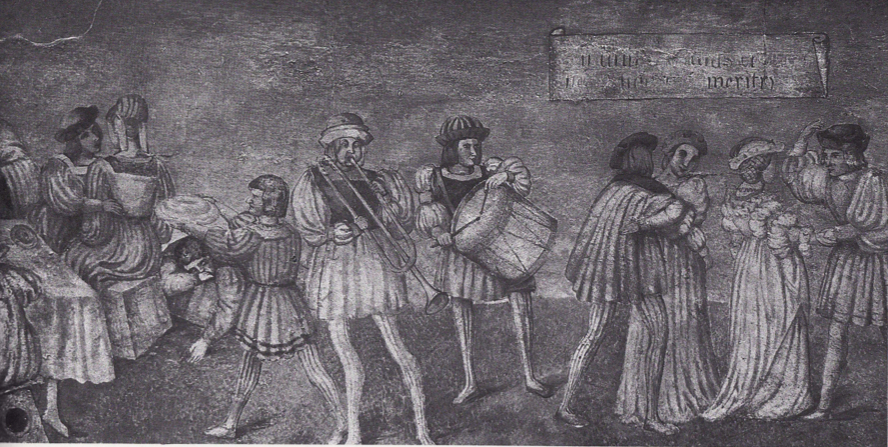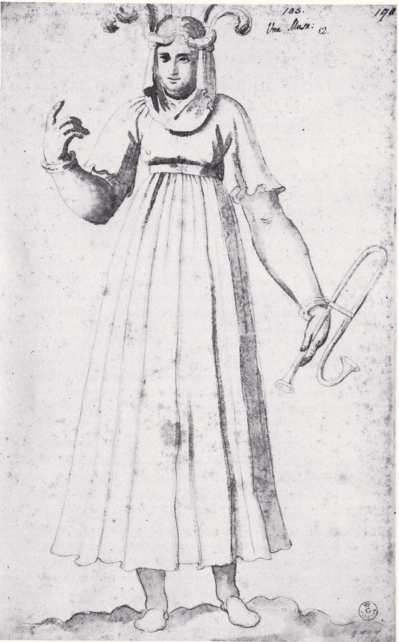Recently I came across an interesting image from the early 16th century that features an instrument bearing something of a resemblance to a trombone. Titled Dances in the Open Air, the painting, by Hans Dürer (brother of the more famous Albrecht Dürer) is a detail of a frieze located in the Hall of the Envoys of the Royal Castle at Wawel (Cracow, Poland). It dates from 1532 (see above image; public domain) (Suchodolski pl. 428).
That image brought to mind another from the 16th century, this one featuring what Edmund Bowles labels an alto trombone. If it is indeed a trombone, it is a somewhat awkwardly-rendered depiction. The image, dated from 1566, is by Giorgio Vasari. It is associated with a performance of The Genealogy of the Gods for the wedding festivities of Prince Francesco de’ Medici and Johanna of Austria (see facing image; public domain) (Bowles, Musical Ensembles 55).
Both of the images could be proto-trombones: instruments marking the evolution of trumpet into what we know as trombone. They could also simply be awkwardly-rendered trombones by artists not overly concerned with being literal. Or they could be separate instruments entirely. The images do call to mind some descriptions that scholars suspect may refer to very early trombones:
1407—Siena, Italy: German musician Angelo d’Arrigo joins the Palace trumpeters as a player of tuba grossa. There is speculation that this term, tuba grossa (Latin: large trumpet), could be a clerk’s best effort at describing a trombone, which would have been a very new instrument at the time (D’Accone, Civic Muse 443, 517).
1445—Florence, Italy: An account describes the trombone as “trombon grosso…che e tromba torta” (a “large trombone…that is a twisted trumpet” (Polk, Foreign 326; Polk, Archival Documents).
1518—The betrothal of Princess Mary, daughter of Henry VIII, to François, eldest son of François I, King of France, takes place in Greenwich, with a repeat performance in Paris. Festivities include a dance performed by a wind band that probably consists of 3 shawms and 2 trombones (“two brass which were bent back”) (Shaw).

